Freely Available British and Irish Public Legal Information
[Home] [Databases] [World Law] [Multidatabase Search] [Help] [Feedback]
Intellectual Property Enterprise Court
You are here: BAILII >> Databases >> Intellectual Property Enterprise Court >> Erol v Posh Fashion Ltd [2022] EWHC 195 (IPEC) (08 February 2022)
URL: http://www.bailii.org/ew/cases/EWHC/IPEC/2022/195.html
Cite as: [2022] EWHC 195 (IPEC)
[New search] [Printable PDF version] [Help]
Neutral Citation Number: [2022] EWHC 195 (IPEC)
Case No: IP-2019-000124
IN THE HIGH COURT OF JUSTICE
BUSINESS AND PROPERTY COURTS OF ENGLAND AND WALES
INTELLECTUAL PROPERTY LIST (ChD)
Intellectual property enterprise court
The Rolls Building
7 Rolls Buildings
London, EC4A 1NL
Date: 8 February 2022
Before:
RECORDER DOUGLAS CAMPBELL QC
- - - - - - - - - - - - - - - - - - - - -
Between:
|
|
ahmet erol
|
Claimant |
|
|
- and - |
|
|
|
Posh fashion limited |
Defendant |
- - - - - - - - - - - - - - - - - - - - -
The Claimant appeared in person
Mr Richard Davis (instructed by Aliant Law) appeared on behalf of the Defendant
Hearing date: 2 December 2021
- - - - - - - - - - - - - - - - - - -- - -- - -- - - - -
Approved Judgment
Recorder Douglas Campbell QC :
Introduction
- This is an action for infringement of two registered designs, namely 4 020 066 (“’066”) and 4 020 067 (“’067”). Both designs were registered as of 18 May 2011. I will start with what the relevant designs look like. They are as follows.
- Both sides proceeded on the basis that the ‘066 design was for the front and back of a hoody bearing a legend which consists of (a) the word London (b) the Union flag and (c) the word England in the particular juxtaposition shown. This was referred to as the “London+Flag+England” legend and I shall use that term. Similarly it was common ground that the 067 design was for the front and back of a T-shirt bearing the same legend.
- The Claimant (“Mr Erol”) represented himself at trial. His first language is Turkish and although he did his best to conduct the trial in English he was assisted from time to time by an interpreter. The Defendant was represented by Mr Richard Davis of Counsel. The first language of the Defendant’s main witness, Mr Zarguly, was Pashto and his cross-examination was translated into Pashto by the Defendant’s interpreter. The need for translation on at least one side, and sometimes on both sides, meant that cross-examination was slow at times but I am grateful to all for their cooperation.
- The issues were identified at the case management conference held on 26 July 2021. I will rephrase them slightly as follows:
- As the case developed at trial, most of the argument and evidence focussed on the first 2 issues (ie validity) rather than the third (infringement).
- So far as validity of the two designs was concerned, the Defendant relied on 3 alleged items of prior art. These were referred to as Urban Attitude, Lambert Souvenirs, and KK Hosiery.
- Urban Attitude was a company run by a Mr Danesh Hirji. The Defendant relied on an Urban Attitude brochure bearing the date 1999 on its front page. Two designs were particularly relied upon. The first is style EX10, which appears in a section headed “Expantex Teeshirts”. The second is style EH03 which appears in a section headed “Printed Hooded Tops”. I reproduce them below.
- Lambert Souvenirs was a tourist outlet that operated both online and from premises at 3 Whitehall, London. The alleged prior art took the form of a rather poor quality image of a red hoody said to bear the “London+Flag+England” legend. This prior art was found using the internet Wayback Machine, which was said to show that this image was on the Lambert Souvenirs website in March 2008.
- KK Hosiery is a company which was run by Mr Zarguly of the Defendant, originally with a Mr Kamal. Here the Defendant relies on the following images from a KK Hosiery brochure which is said to date from 2007-2008.
- The argument on validity was whether the alleged prior art was prior art at all. The Claimant said that it was not, and the Defendant said that it was. I return to this below.
- The Defendant did run a non-infringement defence, but solely on the basis of colour. It was said that if the designs relied upon were valid at all, it must be because they were limited to the colours red and grey respectively, and there was no evidence that the Defendant had sold any red hoodies or grey T-shirts.
- On the day before the trial, the Defendant applied for permission to amend its statement of case to rely on a decision of the UKIPO declaring the ‘066 registration to be invalid. This was decision O-153-16, dated 23 March 2016. Mr Erol agreed that there had been such a decision before the UKIPO but said that he had successfully appealed it and that the ‘066 registration had been restored. I dismissed this application for reasons given at the time. Essentially (a) it was far too late for such an amendment to be introduced (b) it seemed likely to require further evidence and investigation. For instance the information on the UKIPO register about this registration seemed to be wrong, or at least incomplete. I have disregarded this material.
- Mr Erol explained why he did not believe that the prior art relied upon by the Defendant invalidated his designs. He gave a number of reasons for this which I will consider below.
- Mr Erol also explained the difficulties encountered by souvenir traders in London, including high rents as well as the problems more recently caused by Covid-19. It was impossible not to feel sympathy for traders in his position. However Mr Davis expressly and rightly cautioned me against deciding the case on sympathy alone. I will focus on Mr Erol’s evidence as regards the prior art.
- The Defendant called oral evidence from its sole director, Mr Khalil Zarguly, in support of its case that the prior art was indeed made available to the public. In fact Mr Zarguly went well beyond this, and claimed that the “London+Flag+ England” legend had been in widespread use on clothing for many years before 2011. In particular he said that such clothing had been sold since at least 1994. Mr Zarguly explained that he had obtained the Urban Attitude 1999 brochure from Mr Hirji, and that the copies of this brochure in evidence had been made by the Defendant’s solicitors from that original at a meeting held in their offices on 14 September 2021. He also said that KK Hosiery had been trading in clothing bearing the “London+Flag+ England” legend since 2006. All of this evidence was disputed by Mr Erol.
- The Defendant also called evidence from Mr Muhammad Alam, currently the Director of London Marketing Consultants Limited. Mr Alam said that he had seen the “London+Flag+ England” legend being used on clothing such as hoodies, T-shirts, tank tops, ski hats and baseball caps since 2001 in a variety of different colours. This included use in the early 2000s by Urban Attitude and by Mr Alam’s then employer, a company which traded as GWCC. All of this evidence was also disputed by Mr Erol.
- It will be apparent that the issues in this case are primarily factual, not legal and I shall be brief.
- The requirements of novelty and individual character are set out in s 1B of the Registered Designs Act 1949 (as amended), as follows:
- Novelty requires little elaboration for present purposes. As regards individual character I bear in mind HHJ Hacon’s analysis thereof in Cantel Medical (UK) Ltd v ARC Medical Design [2018] EWHC 345 (Pat) at [181]-[182].
- One point I should mention is the importance of colour, as considered by the Supreme Court in PMS v Magmatic [2016] UKSC 12 at [33]-[34] (per Lord Neuberger, with whom the other JSCs agreed):
- I now turn to the issues I have to decide.
- The first task is to interpret the ‘066 design. As I have already said, it was common ground that this is for the front and back of a hoody bearing the “London+Flag+England” legend. I find that the hoody shown in the design is unexceptional, as is the location of the legend, and Mr Erol did not suggest to the contrary. Thus the only element which can convey novelty and/or original character on the design as a whole is the legend itself. The nature of the fabric (eg 100% cotton) is not indicated, nor is the fact (if fact it be) that the legend is embroidered rather than printed in the design shown. Neither of these forms part of the design.
- I also conclude from the fact that the registration is in colour means that the colours (principally red) form part of the design. However, I find that the colours used are common, standard, frequently used colours having no individual character either alone or in combination. It therefore does not seem to me that anything turns on this. I will say a little more about colour below.
- I consider that validity of the ‘066 design depends entirely on whether the Urban Attitude brochure genuinely dates from 1999. This is for the following reasons:
- Mr Erol did not think that the Urban Attitude brochure designs dated from 1999 at all. He claimed that in or around 2014 he had been told by customers that Mr Hirji had (a) been investigated for VAT fraud and other offences by Trading Standards (b) been convicted of these offences, (c) given a prison sentence of about 7 years and (d) banned from being a director for life. Mr Erol thought that the 1999 date had been applied to a brochure showing designs which actually were from much later. This last point was in substance an allegation of forgery, since Mr Erol did not explain how it could have happened accidentally, and the forgery could only realistically have been done by Mr Zarguly.
- Whilst I appreciate that this is Mr Erol’s genuinely held view, I do not accept it for a number of reasons.
- I therefore find that the Urban Attitude brochure genuinely dates from 1999, and that the ‘066 design is invalid having regard to it. It is not necessary to consider Lambert Souvenirs or KK Hosiery but I will do so briefly in case I am wrong about the Urban Attitude brochure.
- Although the web image is not very clear, Mr Erol accepted that the Lambert Souvenirs web image was of his product. He said that he produced it in his factory as samples in very limited quantities in 2008.
- Mr Erol suggested that the Lambert Souvenirs image had been inserted in the web page “afterwards through editing”. I do not understand this. The web page was obtained via the Wayback Machine and (barring a highly sophisticated web-based fraud, which was not established) any editing would have had to have been done in 2008. I see no reason why anyone would have done so, particularly since Mr Erol accepted that the image shown was of his product and that he had indeed produced this product in 2008.
- Mr Erol claimed there were a number of differences between this product and the ‘066 design. These included (a) the use of 100% cotton rather in the Lambert Souvenirs product as to opposed 65% cotton/35% polyester in “the registered version”; (b) the absence of pockets in the Lambert Souvenirs product; (c) the use of more than 2 colours in the Lambert Souvenirs legend; and (d) the use of embroidery in the registered design, as opposed to a printed legend for Lambert Souvenirs.
- I do not accept that any of these differences are important. Points (a) and (d) are irrelevant since they are not mentioned in or apparent from the registration. Points (b) and (c) can be discerned in the ‘066 design, but the overall impression of both the Lambert Souvenirs product and the ‘066 design is still the same. Mr Erol mentioned some other differences but they are all less important (both individually, and in combination) than those I have considered. I therefore find that the ‘066 design is invalid having regard to this prior art as well.
- The issue here is that although the “London+Flag+England” legend is the same as in the ‘066 design, the garments are different. I have already found that the hoody in the ‘066 design is unexceptional, but since this validity attack is clearly weaker than the other two I shall not decide it.
- Much of the same reasoning applies here as it did in relation to the ‘066 design, save that this registration is for the front and back of a T-shirt bearing the same legend. I find that the design of the T-shirt itself is unexceptional, and Mr Erol did not suggest to the contrary.
- I again conclude that the colour is part of the registered design, but once again the particular colours used (principally grey) are again commonly used ones, and again Mr Erol did not suggest to the contrary.
- As in relation to the ‘066 design, and for substantially similar reasons, I find that the Urban Attitude brochure invalidates the ‘067 design. There is a slightly stronger case for anticipation (ie lack of novelty) here because the Urban Attitude specifically mentions the colour “gray” in relation to T-shirts, but even assuming there is no anticipation the ‘067 design still lacks individual character with respect to the relevant part of the Urban Attitude brochure. This is because the overall impression is in both cases the same.
- The same issue arises as it did in relation to the ‘066 design. Again it is unnecessary to consider whether this attack succeeds and I shall not do so.
- There appeared to me to be force in the Defendant’s squeeze argument referred to above. Mr Erol did not show me any samples of the Defendant’s products in the relevant colourways (ie red, and grey, respectively). In fact he was restricted to a single sample thereof by virtue of an order made at the case management conference: see the final recital to the Order of 26 July 2021. However given that I have held both designs to be invalid this issue does not arise, and I shall not decide it.
- For the reasons set out above, both the ‘066 and ‘067 registrations are invalid. Hence the action fails.
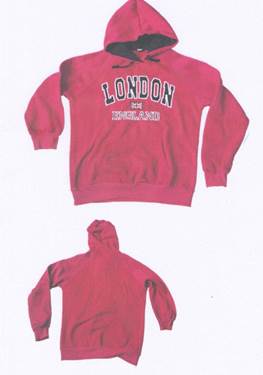
The ‘066 design
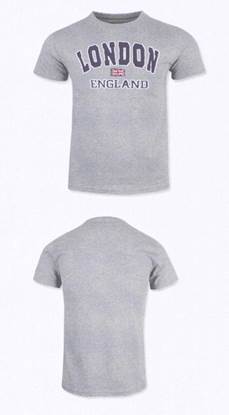
The ‘067 design
The issues
1) Whether the ‘066 design was (a) new and (b) had individual character as at 18 May 2011.
2) Whether the ‘067 design was (a) new and (b) had individual character as at 18 May 2011.
3) Whether the Defendant’s garments produce on the informed user an overall impression different from (a) the ‘066 design (b) the ‘067 design.
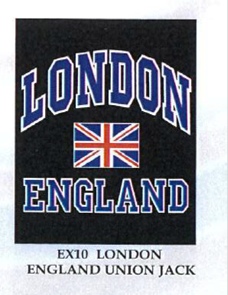
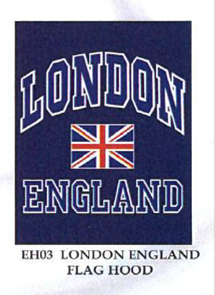
Later pages in the same brochure show order forms for “printed teeshirts” in the colour “gray” [sic].
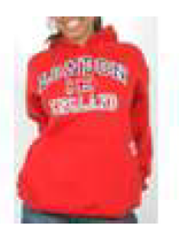
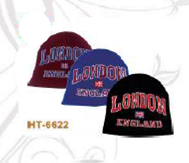
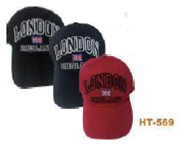
As will be seen these are hats and caps, not hoodies or T-shirts. There were also some gloves in this brochure which were said to bear the legend, but the legend on these is difficult to discern and I shall ignore them.
The witnesses and their evidence
Legal context
1B Requirement of novelty and individual character.
(1)A design shall be protected by a right in a registered design to the extent that the design is new and has individual character.
(2)For the purposes of subsection (1) above, a design is new if no identical design or no design whose features differ only in immaterial details has been made available to the public before the relevant date.
(3)For the purposes of subsection (1) above, a design has individual character if the overall impression it produces on the informed user differs from the overall impression produced on such a user by any design which has been made available to the public before the relevant date.
(4)In determining the extent to which a design has individual character, the degree of freedom of the author in creating the design shall be taken into consideration…
33. So far as the presence or absence of colouring in any image is concerned, in [32] of his judgment on this case Kitchin L.J. explained that:
"[a]n application for a Community Registered Design may be filed in black and white (monochrome) or in colour. If colour forms no part of the design then it is conventional to file the design in black and white. Similarly, if a particular colour does form part of an aspect of a design then it may be filed wholly or partly in that colour. So also, if monochrome colours are a feature of the design, this can be shown by placing the design against a background of a uniform but different colour."
34. That this has long been well established is supported by Dr Schlötelburg's article, in which he wrote that "where a design is shown in colours, the colours are claimed, while a black and white drawing or photo covers all colours" - [2003] EIPR 383, at p. 385. Accordingly, as Kitchin L.J. observed at [42] of his judgment, "the various representations [in the CRD] are shown in monochrome, and so it must be concluded that this design is not limited to particular colours", and therefore "PMS cannot point to the colour of the Kiddee Case as being a point of distinction". There is, rightly in my judgment, no challenge to that conclusion, which is consistent with what was said by the Fourth Chamber of the General Court in Sphere Time v OHIM (Case T-68/10), EU:T:2011:269, [2011] ECDR 20 , at [82].
Whether the ‘066 design was (a) new and (b) had individual character as at 18 May 2011.
Interpretation of the ‘066 design
Validity over the Urban Attitude brochure
1) The Urban Attitude “London+Flag+England” legend is identical to that appearing in the ‘066 design.
2) It is true that there is no image in the brochure showing a hoody with the “London+Flag+England” legend, but I do not see that anything turns on this since the hoody shown in the design is unexceptional and the brochure expressly indicates that a hoody will be supplied with the “London+Flag+England” legend applied. Mr Erol did not give any reason to suppose that a hoody, so supplied and bearing that legend, would look any different to the ‘066 design.
3) I accept that such a hoody might not be the same colour as the ‘066 registration but this makes no difference either since the colours are all unexceptional. Thus changing from blue to red, say, does not confer individual character.
4) Thus even assuming the ‘066 design is novel over the Urban Attitude brochure, it must lack individual character with respect to it since the overall impression is in both cases the same.
a) Mr Erol cross-examined Mr Zarguly to try and establish that the 1999 brochure had been forged. However Mr Zarguly denied this and maintained his explanation of how he had obtained it.
b) I accept Mr Zarguly’s evidence as to how he obtained the 1999 brochure. There is no reason to suppose it is anything other than authentic, and I so find. I find that there was no such forgery.
c) Any such finding of forgery would in any event have required considerably more evidence than I was given. For instance Mr Erol did not even ask for the original of the brochure which was copied by the Defendant’s solicitors.
d) I also accept the evidence given by both Mr Zarguly and Mr Alam referred to above, to the effect that garments bearing the “London+Flag+England” legend had been sold by a number of London traders since the early 2000s. I appreciate that these sales are not relied upon as prior art in their own right but this evidence provides additional support for rejecting the allegation of forgery.
e) Mr Erol was shown to be wrong about Mr Hirji’s alleged disqualification “for life” from being a director. In Mr Erol’s own cross-examination he was shown a list of currently disqualified directors which did not contain Mr Hirji’s name. Mr Erol accepted that he was mistaken.
f) Mr Erol never showed any evidence to suggest that Mr Hirji had ever been guilty of any wrongdoing at all. Yet this was the only real reason Mr Erol gave for supposing there had been a forgery in the first place.
g) Nor did Mr Erol explain why Mr Hirji’s wrongdoing in 2014, had it been shown to exist, would have had any relevance to the issue of whether the Urban Attitude brochure had been published in 1999.
Validity over Lambert Souvenirs
Validity over the KK Hosiery catalogue
Whether the ‘067 design was (a) new and (b) had individual character as at 18 May 2011.
Interpretation of the ‘067 design
Validity over the Urban Attitude brochure
Validity over the KK Hosiery catalogue
Whether the Defendant’s garments produce on the informed user an overall impression different from (a) the ‘066 design (b) the ‘067 design.
Conclusion
